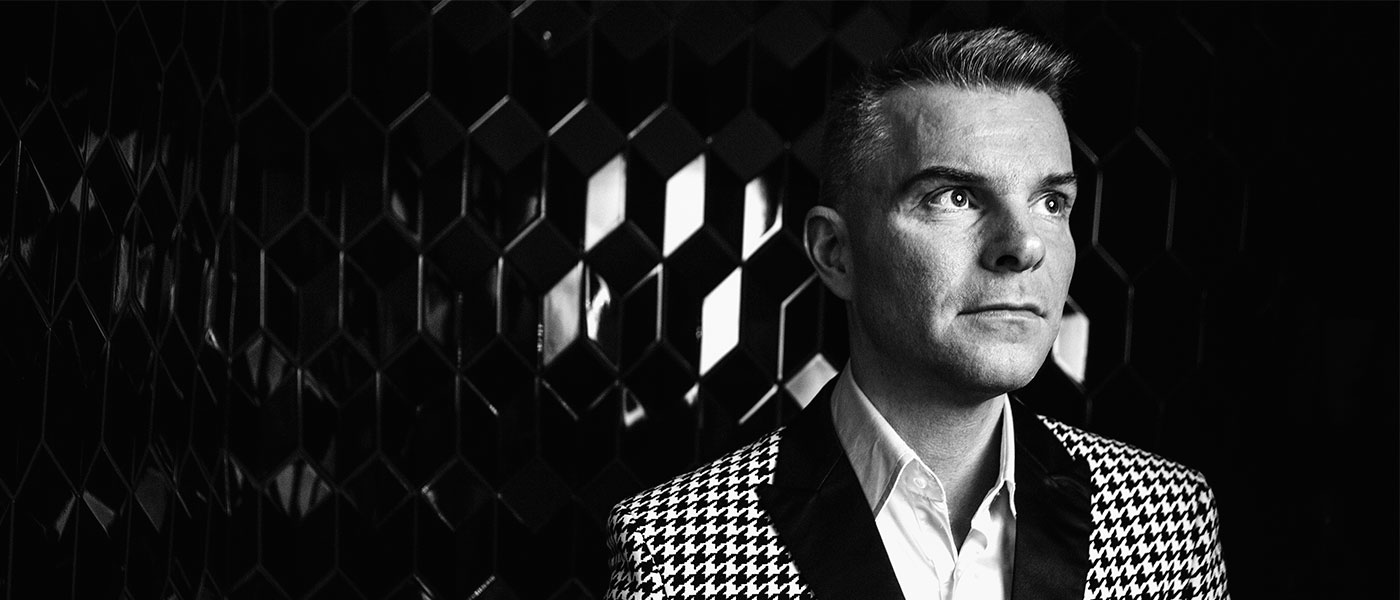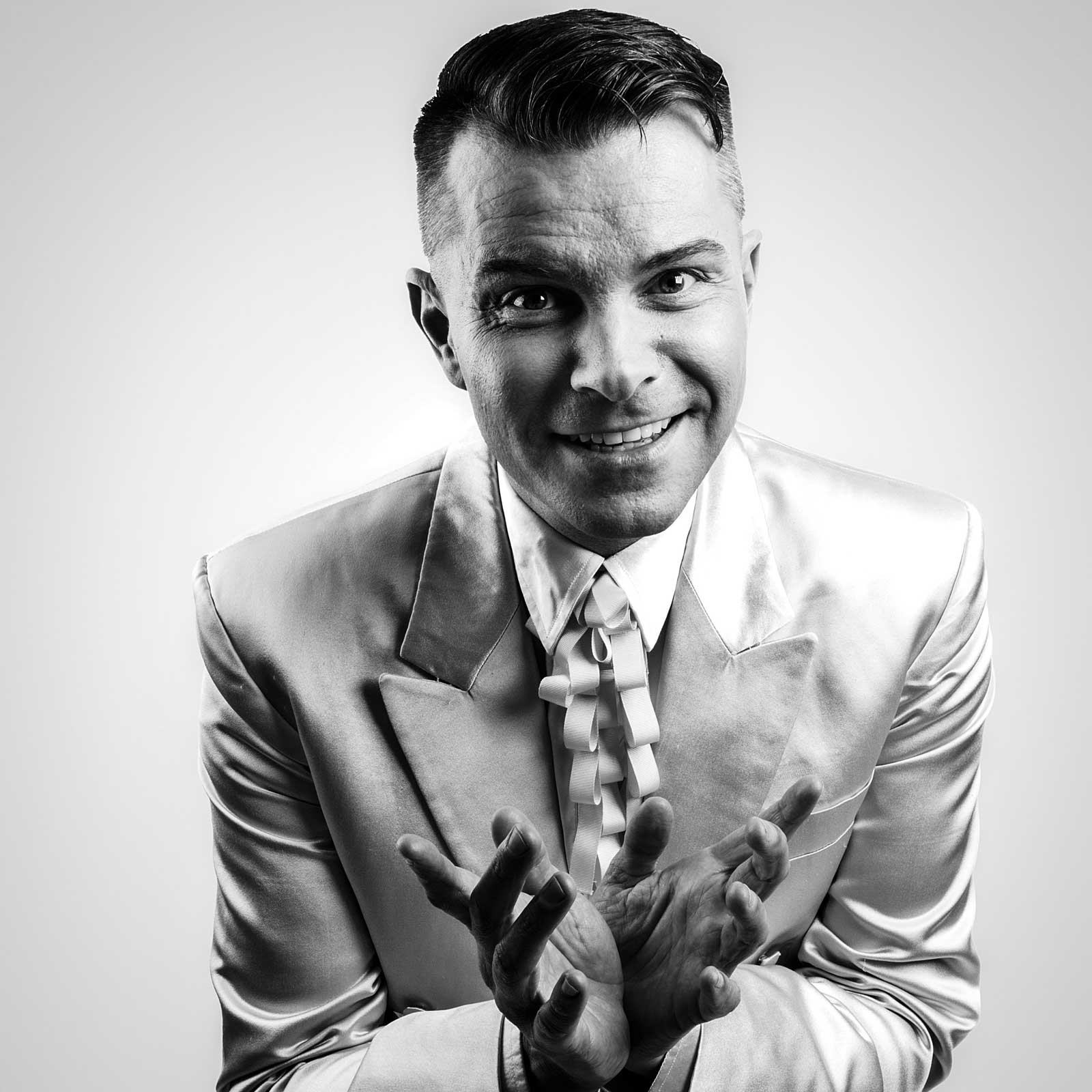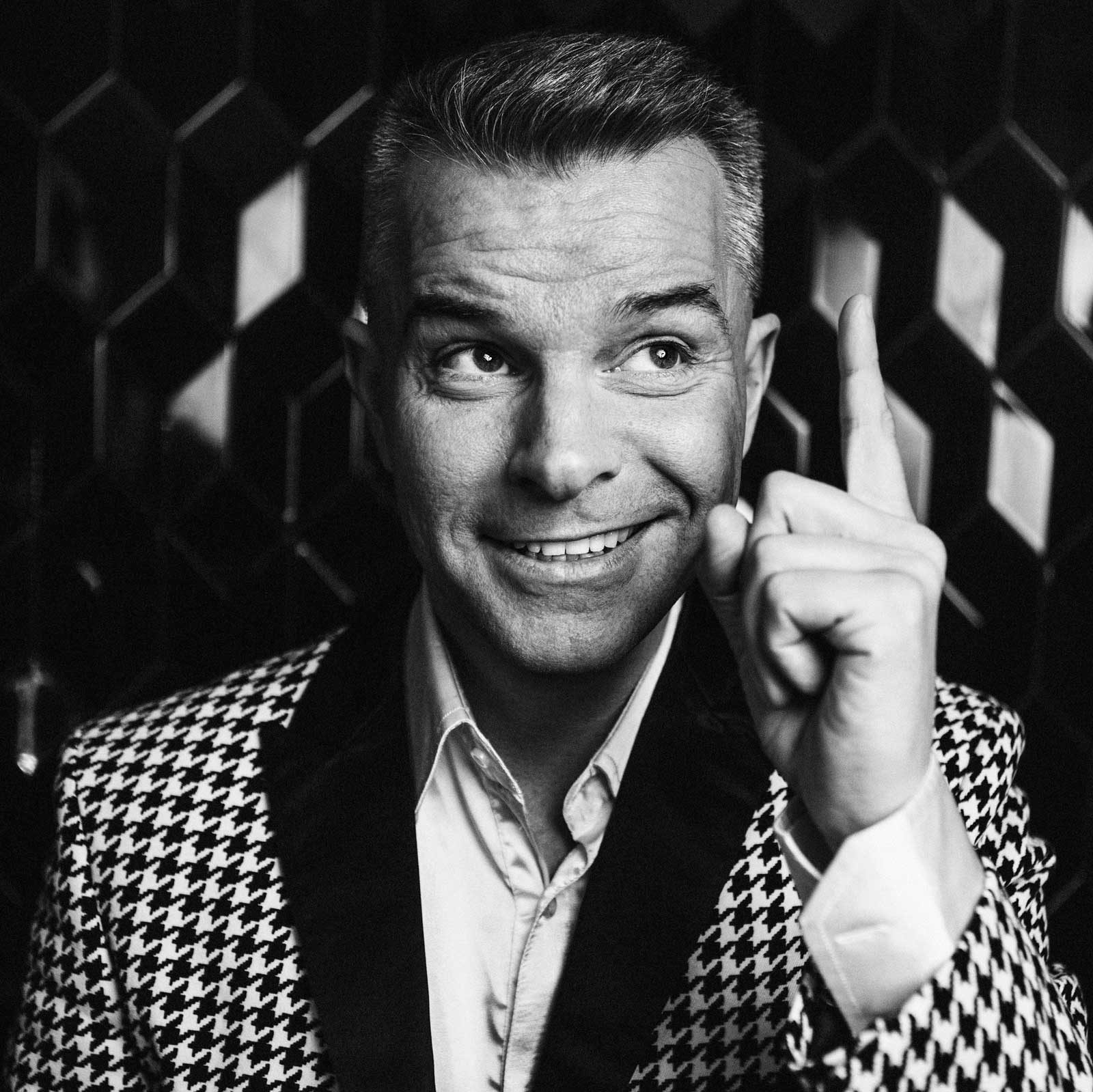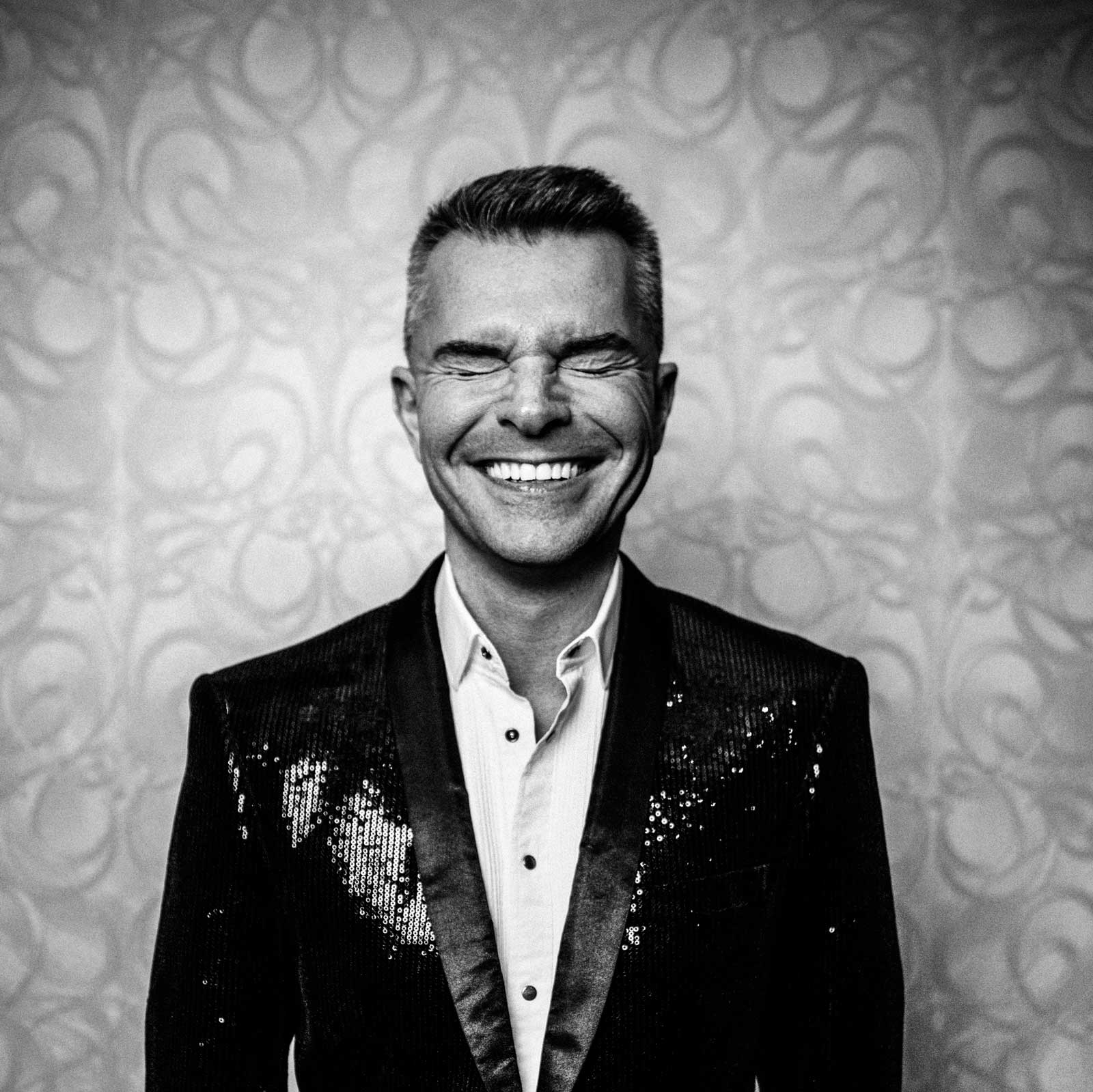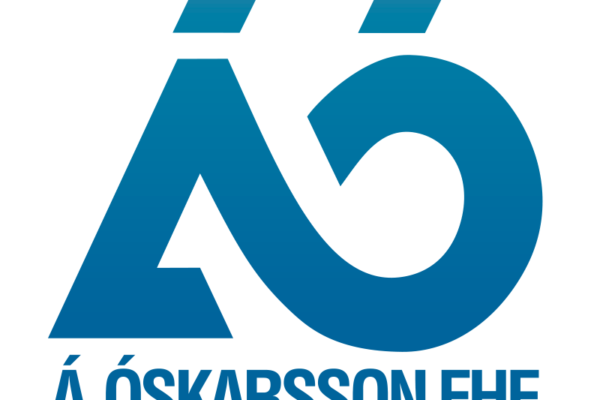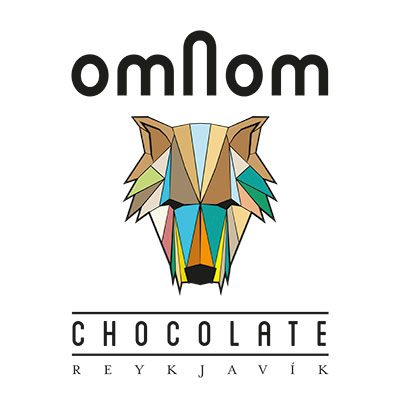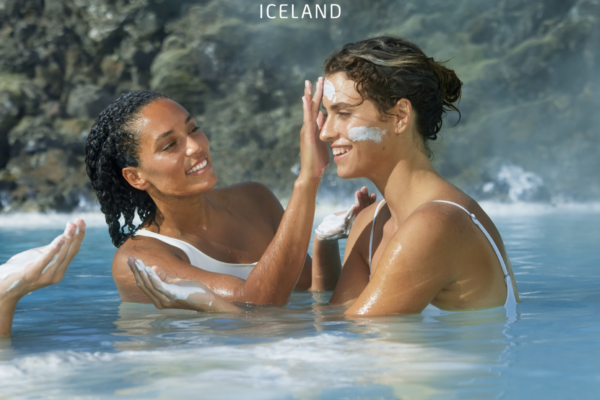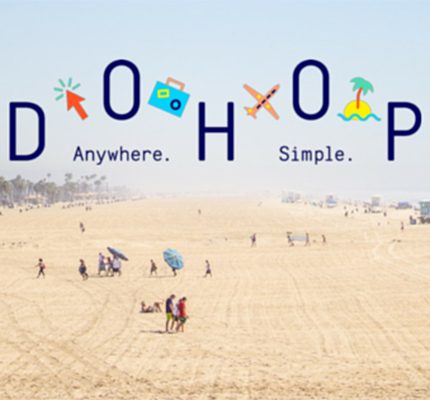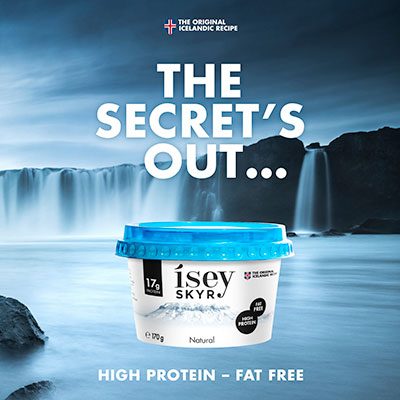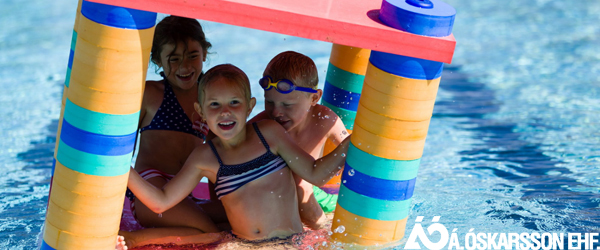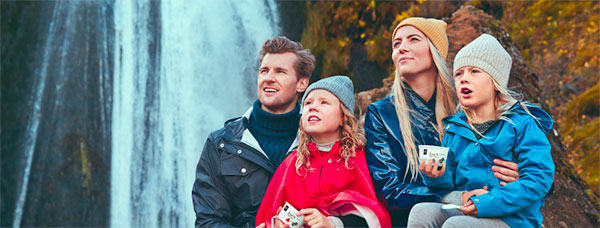It’s about 10.30pm in Reykjavík. As the winter gets shorter, the skies are getting lighter and for Páll Óskar, his days seem to be following the sun. After all, it’s an exciting time for Iceland’s queen of pop; he was recently voted “musician of the year”, he sang the official theme song for the 30th anniversary of Söngvakeppnin 2016, he’ll be putting on an exclusive performance at Pink Iceland’s Pink Masquerade Party in Reykjavík this Saturday and most importantly, he’s putting the final touches on his upcoming new album.
Dressed in a casual navy sweatshirt, no glitter or jewellery, greeting me with his signature smile, Palli, as some people call him, plonks himself unceremoniously on a divine white sofa, pushed up against a wallpapered corner that glistens with a metallic sheen. He positions himself comfortably in front of the camera, tilting his phone left and right to avoid the dreaded horizontal Skype angle. His apartment radiates with a captivating artistic luxury.
“Designing this place was the most fun I’ve had in a while,” he says while giving me a cyber tour of his seaside flat. There is something unsurprising about the aesthetic of his home, every room buzzing with drama, going the extra mile for maximum ambiance and pleasure. This doesn’t steer far away from the pop star we all know as “Páll Óskar”, a natural performer, who captured the hearts of many in a similar fashion, back in the 90s. “Once I’m prepared to perform, I always give the same amount of energy; I give it my all, regardless of the audience. I only really care about the technical issues and that the show is going to be “ok”. As soon as I hit the stage, I become almost possessed. I usually zone out and can hardly remember the things I did while singing. When I look back at the videos of my performances, I usually shrug my shoulders, having forgotten how it all went down.”
There’s a specific tone of passion in Páll’s voice. In reality, it’s already 11pm and you’d never guess that he spent the entire day rehearsing for his performance at Söngvakeppnin 2016 (the Icelandic pre-selection competition for the The Eurovision Song Contest), but instead his energy is contagious, full of zest, mirroring the man you see on stage.
“I do have an alter-ego and that’s the “Páll Óskar” character. He has sort of evolved into this figure over time. I mean, there’s plenty of space in my body for both characters, both “Páll Óskar the pop star” and “Palli”, who’s me. But neither of these characters should ever do a hostile takeover of the other. They have to remain friends. That being said, I have spent huge amounts of time creating this “Páll Óskar” character. The experience for me is like doing a drag show, really. I feel like I’ve been doing drag for more than 20 years now.” He pauses, in a clear moment of reflection. “I know one thing for sure, that as I grow older, I will probably go easy on the dance bits and I will slowly but surely move towards a concert for sitting audiences. I’ve already started that and I love it. I know this is where I am heading.”
Páll has come a long way since he became an internationally known figure in the European music scene in the late 90s. After representing Iceland in the 1997 Eurovision series, he’s been extensively involved with the Söngvakeppnin song contest, where his image often goes hand-in-hand. “I’ve been involved with the contest in so many ways, I’ve been on both sides of the table. I’ve competed on the stage, I’ve been a fan in the audience, I’ve been a commentator, I’ve hosted my own TV show, where we speculated the results, I’ve hosted parties… Every year my face seems to be linked to the contest. But not always in the same light and this time around, I’m doing the theme song for them.” In a similar way to his 1997 hit “Minn hinsti dans” (My Last Dance), “Vinnum þetta fyrirfram” (Lets win this in advance) opens with a bang and has all the ingredients of a classic Páll Óskar hit. “Well, I don’t think it’s going to fit on my next album, but I think it’s a great song for this contest, for the people of Iceland. It fits the theme of Söngvakeppnin and I think I was fit for the job!”
“I was laughed at when I made my first record. Nobody believed that it would sell, nobody believed that there was a market for my work. The first question I ever got about the album was, “what color will the cover be? Pink?”
Of course, each year, Páll’s opinion on the contestants holds significant value. He comments on this years group without much hesitation. “For this years contest, the song that I would play for myself is “Ég sé þig” (I see you) by Hljómsveitin Eva. These are two young girls, performing a beautifully written tune with such a strong clear message. Upon the first listen, you might think it’s an ordinary love song but after hearing them on the radio and learning that they were addressing the refugee situation in Europe, the whole song took on a new meaning. It’s really good.”
Páll emits a supportive energy, a clear team player who wants everybody to succeed. “This is not a sports contest where you can calculate your points. You can’t measure these songs in centimetres, seconds or scores. When competing in music, it’s on a completely different level. That being said, the Eurovision format usually ends up the same way; two or three songs skyrocket to the top, regardless of where they come from, and get all the points, for some strange reason. We, as Icelanders, have just as many chances of winning Eurovision than everyone else. We came close twice, placing 2nd, and I think that’s amazing, coming from a nation of 300,000 people.
To win Eurovision, it’s a combo of the song itself, the melody, the production value, the artist, a flawless performance, the theatrics… it all has to come together and be perfect during those crucial 3 minutes. Every Eurovision winner had just that.” He pauses and shrugs. “I don’t know, I think the energy that you pick up when you hear a Eurovision tune on the dance floor is that it’s a competitive track. It has an aggressive tone, which is probably why it often caters to the gays. We like the drama of the nations competing against each other, we love the hair do’s and the hair dont’s (laughs). We love discussing why one song is better than the other and I’ve noticed that as gays grow older, they don’t stop. They always keep a solid relationship with the pop and dance music of Eurovision and never let go.”
There’s a vibration of warmth that can be felt through the computer when Páll talks about music. It’s no wonder that his effervescent persona has positively impacted the music scene of Europe, that he has earned everyone’s respect.
“Being a role model doesn’t come first. It has to be a result of what you do. I can’t sit down and tell myself “I’m going to write a #1 hit”. It doesn’t work that way. If I knew the secret formula to do that, then I’d be a very rich man. All you can do is trust is your own insights and your own voice. If you listen to that, while creating and performing, someone’s going to pick it up and be inspired. Someone’s going to connect with it. The same goes with all art. It connects with the viewers or the listeners, keeping us connected in conversation about the creations. Anything that comes from artistic inspiration is wonderful. I’ve been inspired by so many different forms of art, not only music.”
His upcoming untitled album is taking on a new avenue. As with his past records, Páll perfectly translates individual experience into collective feeling. He does this with his voice, but also with his songwriting, which is undeniably smooth but oh so redolent. “It’s going to be a pop album, very danceable. I’m working with two producers, Kobbi and Bjarki a.k.a. “Dusk”, who are absolutely amazing. Believe me, those two guys are going to be hit-makers, producing even more artists in the future. They have a very distinctive, excitingly-edgy sound that I really like. But most importantly, I love their personalities. It’s so easy to work with them.”
Is the Söngvakeppnin 2016 theme song a preview of what’s to come? “We’re spicing things up. They’re spicing up my life, which is necessary. I’m just excited for everyone to hear what we’ve been up to.” With his last solo album being released in 2008, this is his first go at releasing a full-length LP in the internet era. “Everyone in the business is asking the same question: “What are we going to do? How are we going to make money creating and producing album?” And I don’t have the answer to that question.”
His eyes perk up, almost as if he’s a young kid on Christmas Eve. “I’m going to make an experiment and it goes like this: I’m going to release five or six singles, with music videos, and I’m going to give them out for free. We started filming them in April of last year and now, the 4th single is already being released. Once we get to the 6th single in June 2016, I’m going to ask the audience: “Now that I’ve given you five or six of my songs, I’ve still got 10 more tracks… would you like to buy an album? Are you willing to prepay for your copy?” People will have roughly one month (June 2016) to digitally pre-order a copy of my album, which will then become available sometime in July. This allows me to see exactly how many copies I need to print, which can be very expensive if you produce more than you can sell. Record labels nowadays are going bankrupt because they’re printing more materials than they can sell. This is the most expensive part of the whole process, so don’t do it unless you know exactly how many copies you need.”
“When you open YouTube, the first VEVO videos on the front page are paid for. If I look under the surface, I will find gay artists. But never on VEVO. Perhaps the guy in the business suit at any major label doesn’t want to market a gay pop star.”
And like any business man on Wall Street, Páll Óskar has evolved with the times, using modern-day technology to his advantage. “Today, I don’t consider the internet a curse. I think it’s more of a blessing because even though musicians aren’t selling that many copies of their albums, people are taking interest in the live shows and the artist’s online presence. They’re willing to pay 20,000ISK for a festival, if they really love the artist. The internet is summing up what David Bowie started doing in the beginning of his career. He was a pioneer for us pop artists because he was the first to let us experience his work in four different ways. First, you heard the song. Secondly, you read the lyrics. Then you’d see the music video, which took his songs to a whole new level, allowing the theatrics to take centre stage. Lastly, the live performance. He gave us permission to do all that. A successful pop star usually has a knack for all 4 art forms.”
Of course, this doesn’t always fill a bank account. “If we look at Iceland in the 90s, you were considered lucky to break even if you were making music. You were lucky. I don’t know a single artist in Iceland who owns a mansion or underground swimming pool.”
This is what makes Iceland so remarkable; the superficial luxuries and Santa Monica Boulevard-eque lifestyle of North America doesn’t penetrate through Icelandic skin. Beneath the lush green moss fields and booming tourist attractions, is a nation of creative thinkers who live minimally and often don’t aspire to live “the American dream”. In Páll’s case, his comfortably sized Reykjavik apartment certainly doesn’t, however, lack in imagination, taste and pazazz.
When asked about his views on today’s music industry, he pauses. “When you open YouTube, the first VEVO videos on the front page are paid for, fed to you by the same executives who have been doing this since the early 40s. It’s been like that forever. If I look under the surface, I will find gay artists. But never on VEVO. Perhaps the guy in the business suit at any major label doesn’t want to market a gay pop star.
I know how that feels. In the early 90s, I was laughed at when I made my first record. Nobody believed that it would sell, nobody believed that there was a market for my work. The first question I ever got about the album was, “what color will the cover be? Pink?” I went through this process where I wanted to prove that I was just as compatible of a pop star as the leading “straight guy”, who was topping the charts at the time.
With that said, I firmly believed, and continue to believe, that regardless of your gender or your sexual orientation, the song comes first. The melody and the lyrics come first. When the energy of the song is there, it’s going to exist forever and I’ve always believed that a good pop song will take care of itself; like water, it’ll find it’s way. Then, that’s when all the other stuff comes in from the image, to the performance, the ribbons that tie it all together.”
It’s almost midnight in Iceland and yet, there’s no feeling of pressure from Páll to wrap up the interview. Instead, he graciously dances around his flat, talking about the Pink Party where he will be performing this weekend.
“I’ll be playing a DJ set and then performing some live material, perhaps some new tracks. It’s going to be a great time and I just want everyone to have a blast!”
And in that moment, it’s clear that Páll Óskar’s success isn’t a result of his flashy stage pieces alone, but that his star quality is fuelled by his authenticity. An Icelandic celebrity at face value, but a man of many hats; a talented singer, writer, dancer, director, activist and role model. Beneath the shimmering blue sequins is an intelligent creator, ceaselessly pushing the musical envelope, redefining innovation and demanding his audiences to think outside the box.
“I think I’ll be heading to bed soon, as tomorrow’s a big day”, he says. Before hanging up, he insists on showing me, what looks like a black light disco party room, his entire CD and DVD collection. The purple light disappears as he flicks on the light switch and like a magician unveiling a new trick, he smiles, spinning his camera around in circles displaying the four walls of the room, all of which are entirely covered by CDs, DVDs and vinyl records. “I’ve got hundreds in my collection,” he says, before wishing me a goodnight in Icelandic.

